.
Newrelic Kubernetes Monitoring
Monitor your Kubernetes clusters with Newrelic in a HashiQube DevOps lab environment

🚀 Introduction
This lab provides hands-on experience with Newrelic Monitoring using Helm on Minikube. You'll learn how to set up comprehensive monitoring for your Kubernetes environment using Newrelic's powerful observability platform.
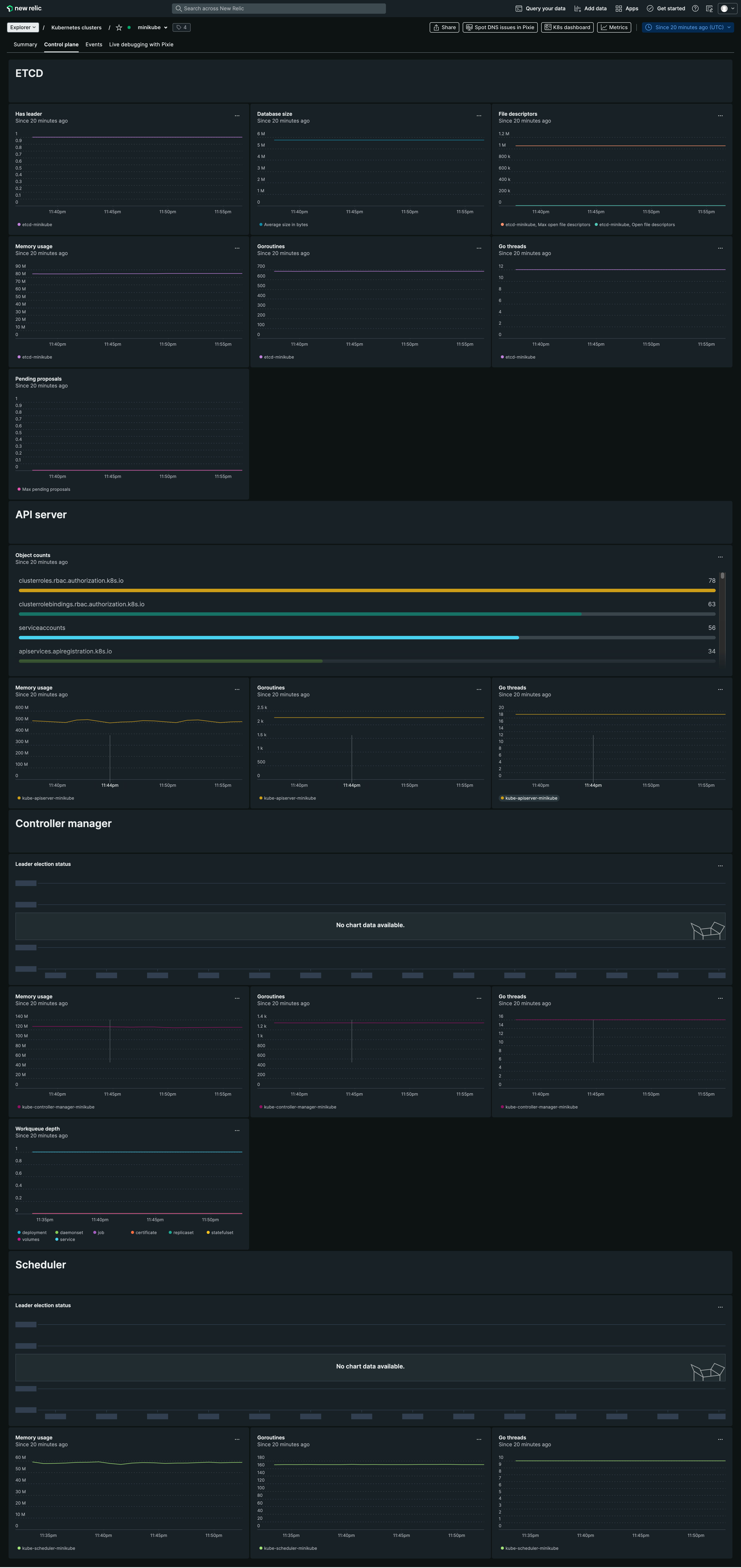
🛠️ Provision
Choose one of the following methods to set up your environment:
vagrant up --provision-with basetools,docker,docsify,minikubedocker compose exec hashiqube /bin/bash
bash hashiqube/basetools.sh
bash docker/docker.sh
bash docsify/docsify.sh
bash minikube/minikube.shAfter provisioning, you should be able to access the Minikube dashboard at: http://localhost:10888
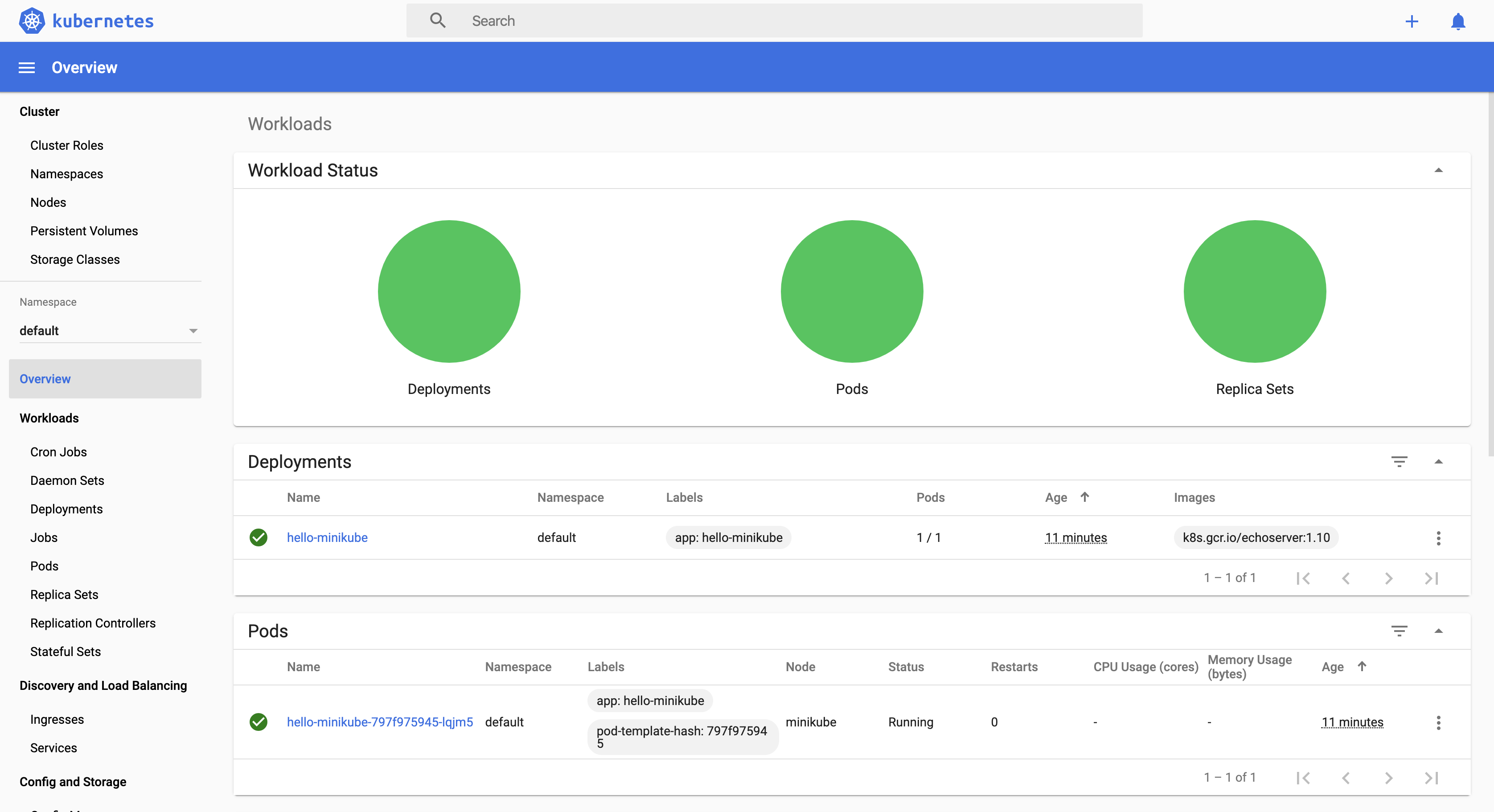
💡 For more detailed information on running Minikube on HashiQube, visit: Minikube
📊 Newrelic Setup
Getting Started with Newrelic
- Head over to http://www.newrelic.com and create a free demo account
- Log in to your Newrelic account
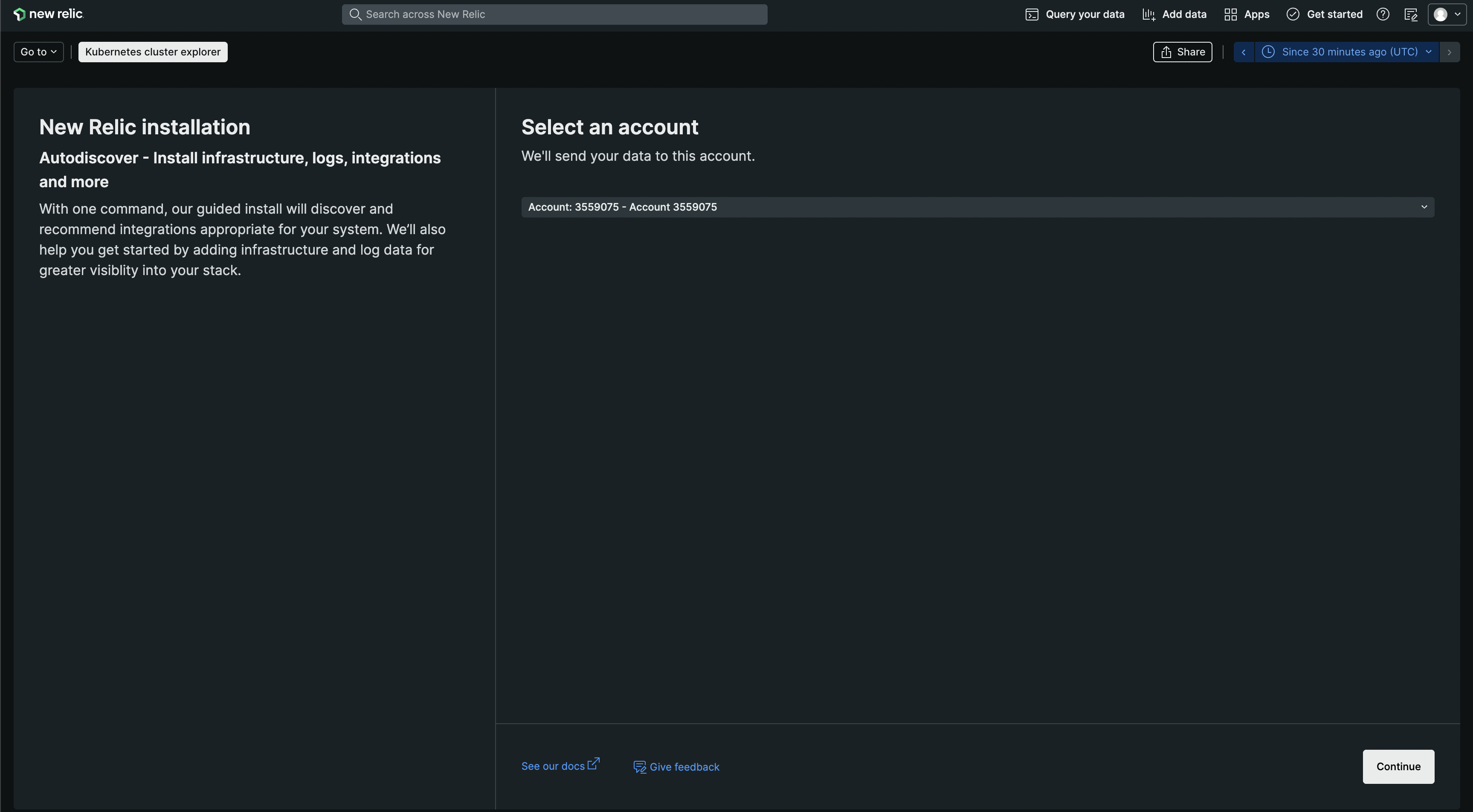
- Select your account and Kubernetes namespace for the integration
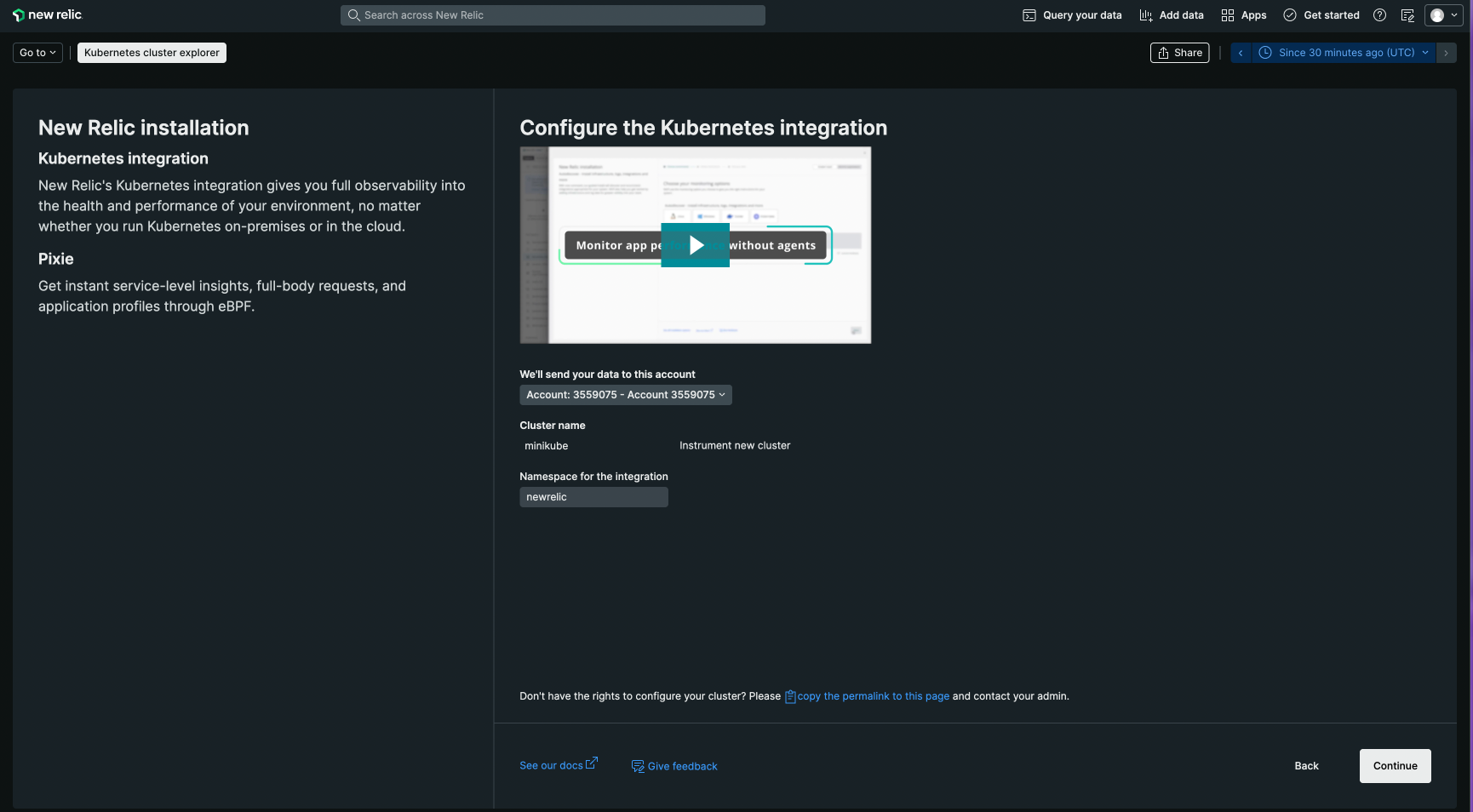
- Choose the Newrelic features for your integration
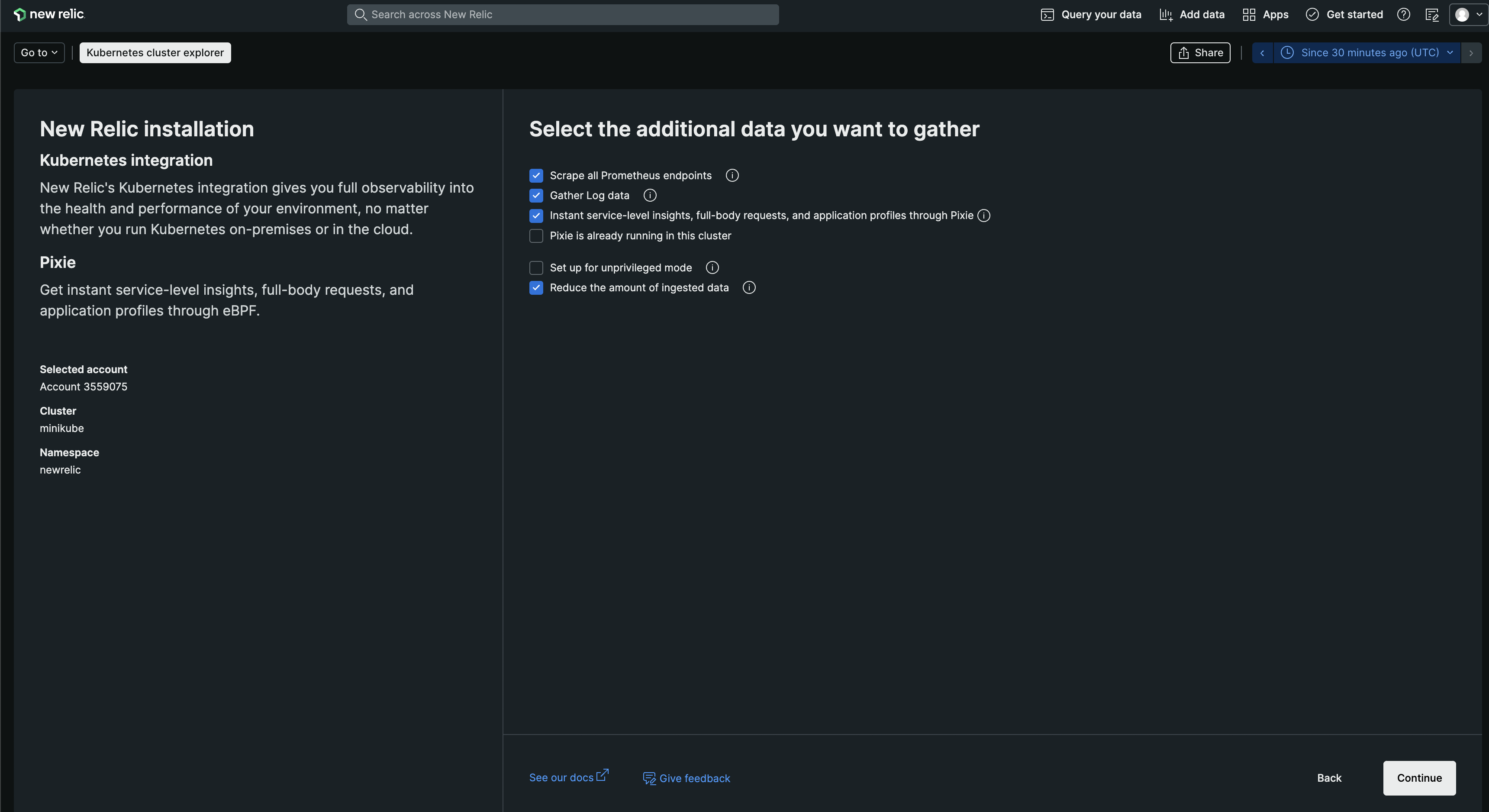
🧩 Installation
Please visit https://one.newrelic.com/launcher/k8s-cluster-explorer-nerdlet.cluster-explorer-launcher and follow the steps there. At the end, you'll receive a Helm command similar to the one below.
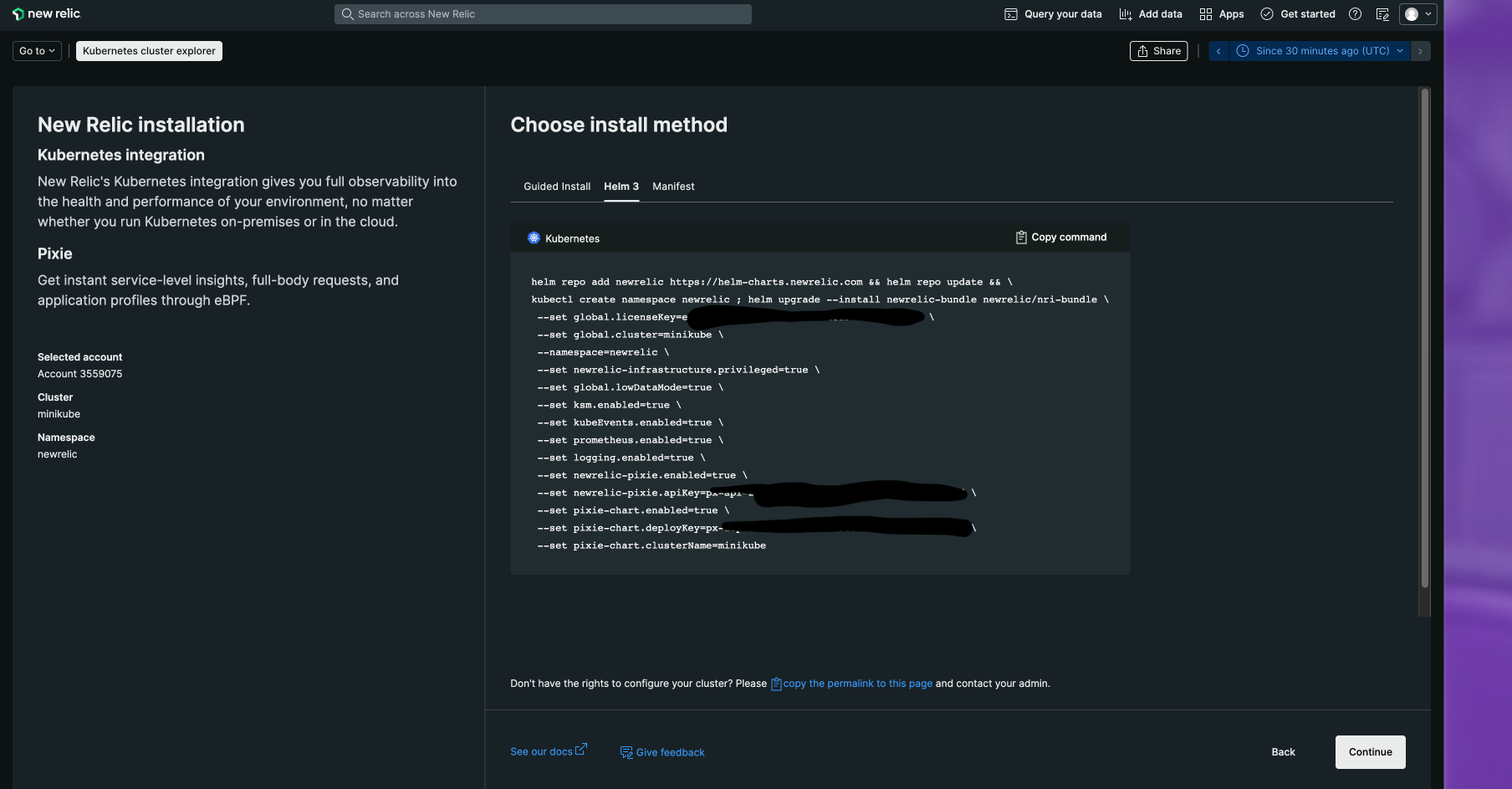
Installation Steps
SSH into your HashiQube environment:
vagrant sshRun the Helm command provided by Newrelic:
helm repo add newrelic https://helm-charts.newrelic.com && helm repo update && \ kubectl create namespace newrelic; helm upgrade --install newrelic-bundle newrelic/nri-bundle \ --set global.licenseKey=YOUR_NEWRELIC_LICENSE_KEY \ --set global.cluster=minikube \ --namespace=newrelic \ --set newrelic-infrastructure.privileged=true \ --set global.lowDataMode=true \ --set ksm.enabled=true \ --set kubeEvents.enabled=true \ --set prometheus.enabled=true \ --set logging.enabled=true \ --set newrelic-pixie.enabled=true \ --set newrelic-pixie.apiKey=YOUR_PIXIE_API_KEY \ --set pixie-chart.enabled=true \ --set pixie-chart.deployKey=YOUR_PIXIE_DEPLOY_KEY \ --set pixie-chart.clusterName=minikube
⚠️ Remember to replace
YOUR_NEWRELIC_LICENSE_KEY,YOUR_PIXIE_API_KEY, andYOUR_PIXIE_DEPLOY_KEYwith your actual keys.
🔍 Verification
To verify that all Newrelic components are running properly:
kubectl get po,svc -n newrelicExample output:
NAME READY STATUS RESTARTS AGE
pod/newrelic-bundle-kube-state-metrics-654df84864-9hvk8 1/1 Running 0 19m
pod/newrelic-bundle-newrelic-logging-xfs98 1/1 Running 0 19m
pod/newrelic-bundle-newrelic-pixie-jxfcv 0/1 CreateContainerConfigError 0 19m
pod/newrelic-bundle-nri-kube-events-6c65bbbc8f-mjrvt 2/2 Running 0 19m
pod/newrelic-bundle-nri-metadata-injection-675dd8f8f7-m5vcg 1/1 Running 0 19m
pod/newrelic-bundle-nri-prometheus-64b9696b7b-xl9kk 1/1 Running 0 19m
pod/newrelic-bundle-nrk8s-controlplane-lsx5t 2/2 Running 1 (17m ago) 19m
pod/newrelic-bundle-nrk8s-ksm-5d598df8d-v8rdv 2/2 Running 0 19m
pod/newrelic-bundle-nrk8s-kubelet-9xb68 2/2 Running 0 19m
NAME TYPE CLUSTER-IP EXTERNAL-IP PORT(S) AGE
service/newrelic-bundle-kube-state-metrics ClusterIP 10.107.30.223 <none> 8080/TCP 19m
service/newrelic-bundle-nri-metadata-injection ClusterIP 10.96.68.196 <none> 443/TCP 19m📈 Viewing Monitoring Data
Within a few minutes, you'll be able to see your Kubernetes clusters in the Newrelic interface:
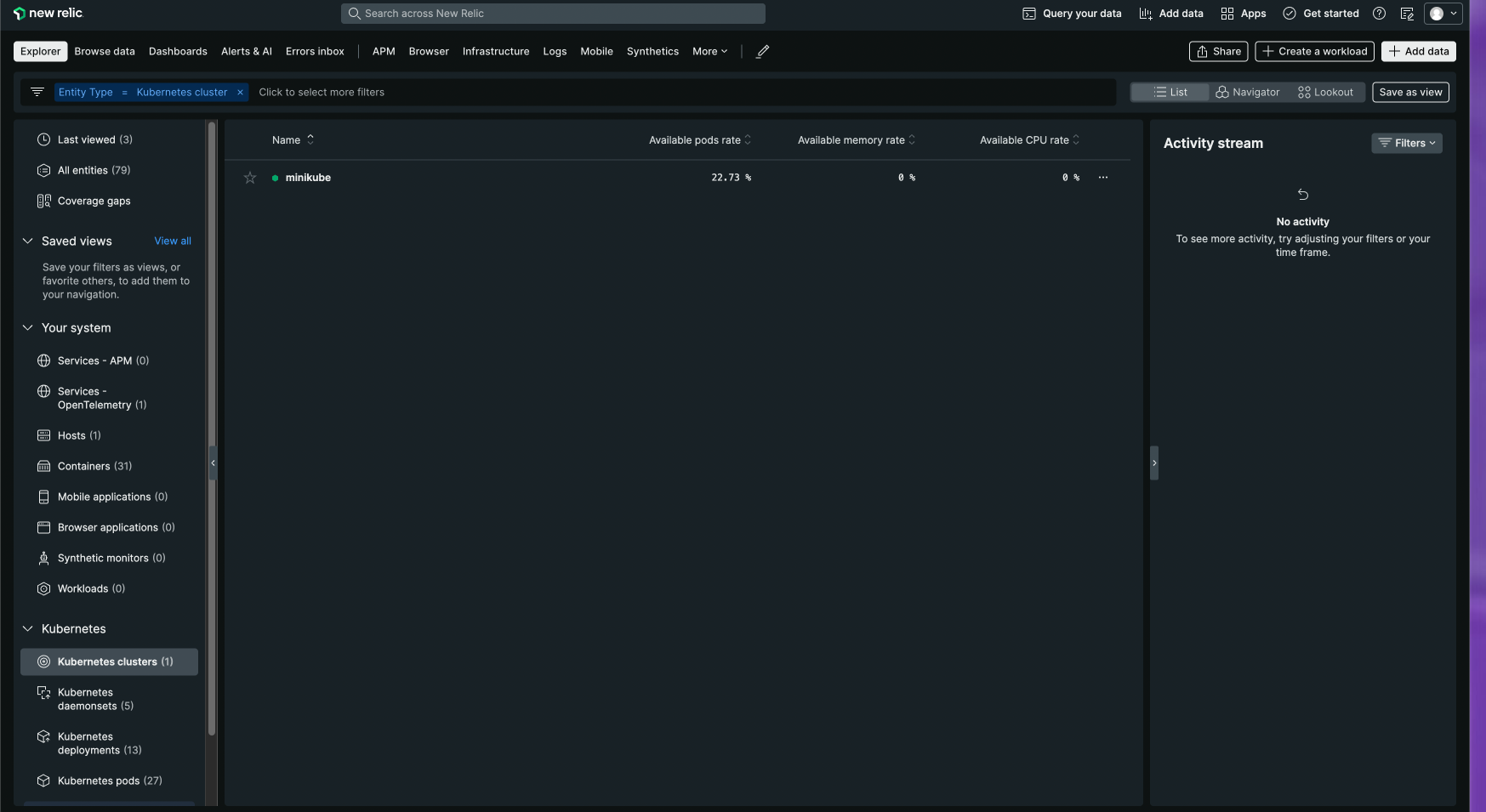
You can then explore the data streaming from your cluster:
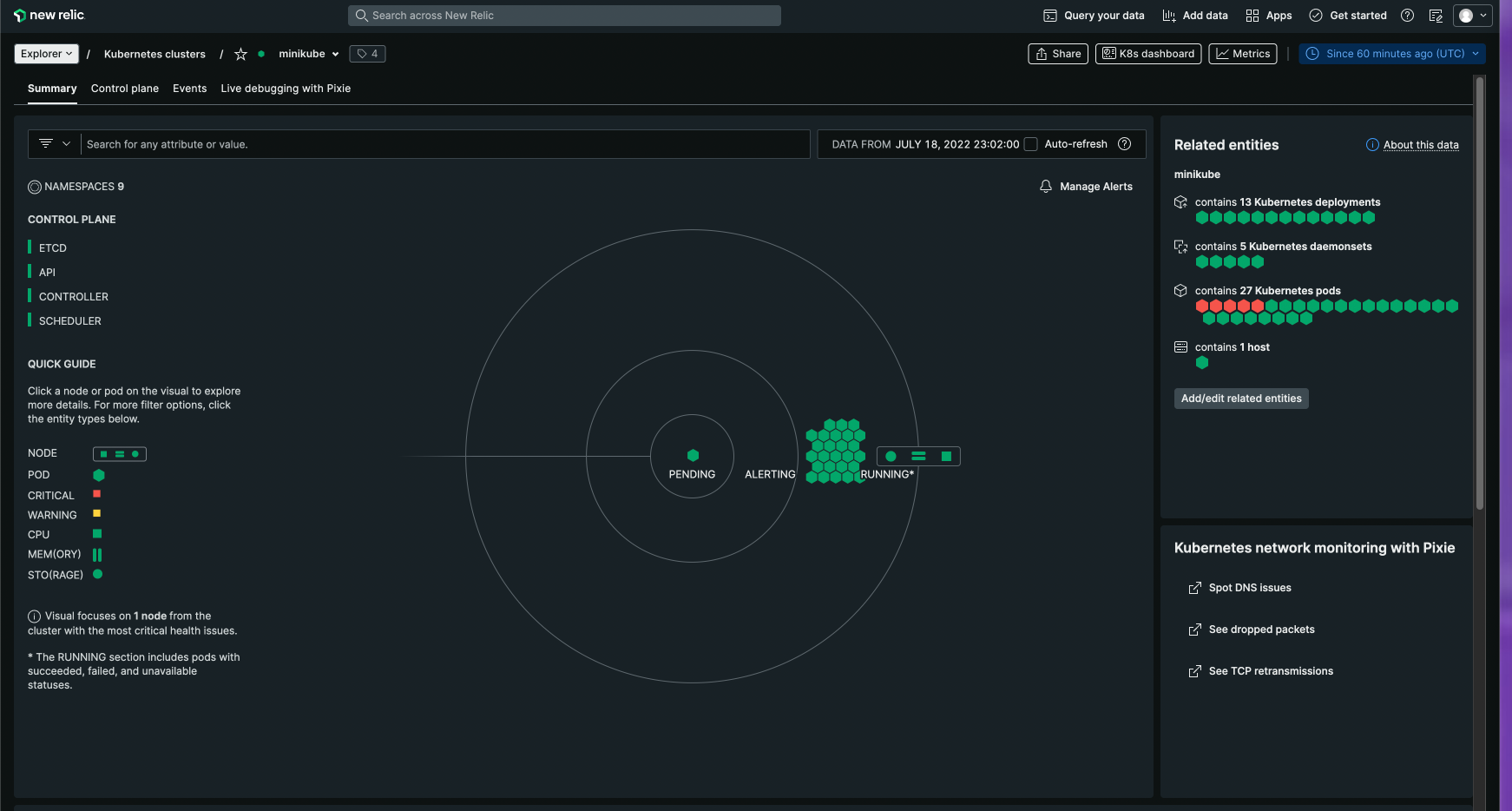
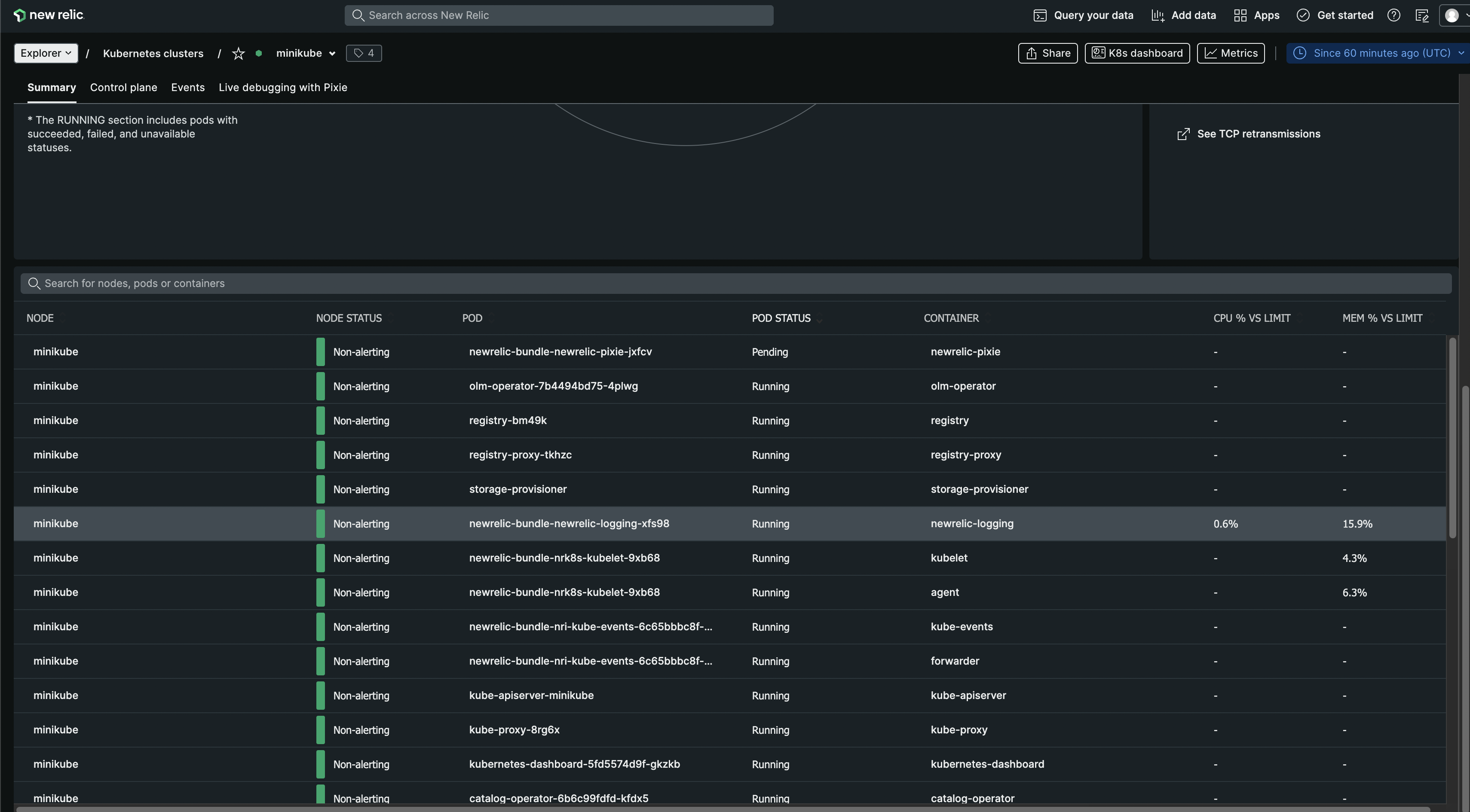
⚙️ Known Issues
Pixie on ARM64 Architecture
There's a known issue when trying to run Pixie on ARM64 chipsets (like Apple M1). You may encounter the following error:
bash: line 225: /home/vagrant/bin/px: cannot execute binary file: Exec format errorThis is due to compatibility issues with the ARM64 architecture. The Pixie binary is likely compiled for x86_64 architecture and won't run directly on ARM-based systems.
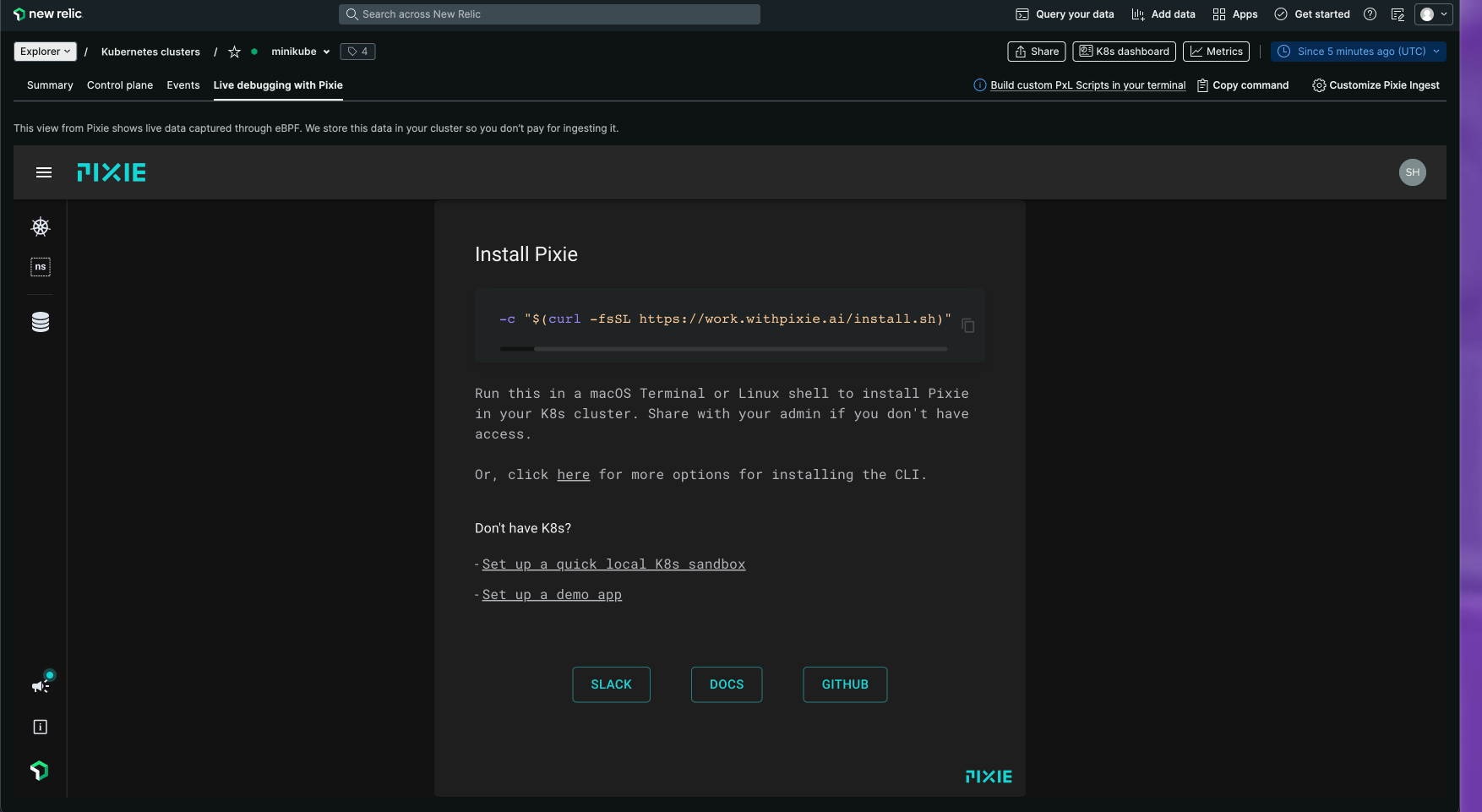
Attempted Installation
bash -c "$(curl -fsSL https://work.withpixie.ai/install.sh)"Error Output
___ _ _
| _ \(_)__ __(_) ___
| _/| |\ \ /| |/ -_)
|_| |_|/_\_\|_|\___|
==> Info:
Pixie gives engineers access to no-instrumentation, streaming &
unsampled auto-telemetry to debug performance issues in real-time,
More information at: https://www.pixielabs.ai.
# ... truncated output ...
==> Authenticating with Pixie Cloud:
bash: line 225: /home/vagrant/bin/px: cannot execute binary file: Exec format error
FAILED to authenticate with Pixie cloud.
You can try this step yourself by running px auth login.
For help, please contact [email protected] or join our community slack/github"
# ... truncated output ...



